Concussion in Australian Sport
Concussion affects athletes at all levels of sport from the part-time recreational athlete through to the full-time professional
Information for Coaches and Support Staff
The coach and team support staff are often the first on the scene when a suspected concussion takes place.
The below resources, including first hand advice from coaches Carrie Graff and James Loveday, have been designed to help recognise the symptoms of concussion and understand the best process for treatment and ongoing management of concussion.
Remember, if in doubt, sit them out!
Stories
Carrie Graf and the role of a coach in concussion management
High performance basketball coach Carrie Graf has seen a huge shift in the perception of concussion within sport over her 25-year career and believes the coach's role is more important now than ever.
As a 12-time WNBL champion player herself, Graf unfortunately is all too familiar with concussion, despite the misconception of basketball being a ‘non-contact sport’.
“It comes as a surprise to most, but concussion happens quite regularly in basketball from players getting an elbow to the head or being contacted while in the air and hitting their head on the wooden floor,” Graf said.
“If a head knock happened back in the day we would just get up and keep playing, but over the past five to ten years there has been a monumental shift in awareness and understanding of concussion and that just wouldn’t happen today.”
Graf believes the role of the coach in concussion management has also evolved in the past decade as more research emerged highlighting the seriousness of the brain injury.
“Coaches are much more alert to the causes and symptoms of concussion, and when they need to extract players from the field of play and go through the concussion protocol.
“Whether it’s at the high performance level or junior sport, knocks to the head are to be taken seriously and as a coach if you don’t have medical staff with you, it’s critical you don’t inject the athlete back into the game until they seek professional medical help.”
Graf encourages coaches of all age groups and skill levels to work with their athletes to build a supportive environment in which concussion can be discussed openly.
"Athletes don’t want to miss games or training, but the best modern-day coaches are those that create an environment where their athletes feel like they're in a safe and trusting environment where they can speak honestly about sustaining a head injury.”
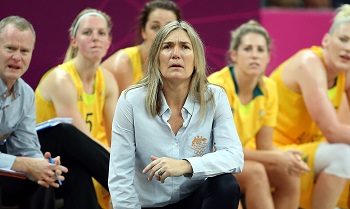
James Loveday on navigating athlete concussion as a coach
As a coach, it is part of the job to recognise when an athlete is not at their peak and as Australia’s Paralympic Rowing Coach James Loveday experienced, it is these observations that can be crucial in picking up signs of concussion.
When asked about his experience dealing with concussion in athletes, Loveday recalled a time he noticed symptoms in a young athlete who turned up for training after being in a car accident.
“He was a little bit dazed initially and we had a conversation about whether he should be training that day, but what was really noticeable was, as the week progressed is he was really struggling with the day-to-day element of training,” Loveday said.
In particular, the athlete was struggling with being out in the sun and his cognitive thinking skills appeared “slower than usual,” according to Loveday.
“He was getting physiotherapy at the time for some whiplash because somebody driven into the back of them, so he’d hit his head backwards... it was only at the point that we explored the idea that it was probably a concussion that was extending out.”
As a coach, Loveday says he sees athletes at their best and at their worst which is why he was able to quickly identify that something was wrong.
“It was really, really obvious with this individual - really charismatic athlete who for the space of about ten days was just quiet, wasn't really engaging with people, didn't want to be in the crew area where there was noise was suddenly going up and sleeping on a regular basis between sessions, just a complete change in behaviour,” Loveday said.
Once it was established that it was a concussion, the team immediately shifted towards a different set of protocols to manage it.
“As soon as it was very obvious what it was, it essentially ended up being just a really gradual return to training,” Loveday said, noting that they removed intensity from the program and spoke to the athlete's school about reducing screen time for up to ten days until he was well enough to resume things as normal.
Speaking with hindsight, Loveday says if he were to face another case of suspected concussion his first point of call would be to consult a doctor, especially in the case of a para-athlete.
“I think consulting with a doctor and seeing what the state of play is... I expect there are some elements from a medical perspective where managing it within Para-Rowing a slightly different.”
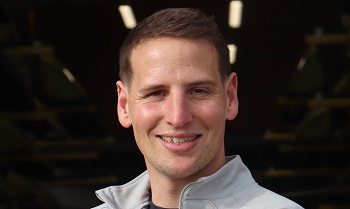
"If someone has a forceful blow to anywhere in the body where they are not quite themselves they should be assumed they have a concussion and removed from the field of play."
Dr David Hughes, AIS Chief Medical Officer
What is concussion?
Concussion is a brain injury caused by a knock to the head or anywhere on the body, where the force is transmitted to the head. It can also be caused by a fall. Concussion involves temporary neurological impairment. The symptoms may evolve over the hours or days following the injury. While all concussions should be assessed by a doctor, most will resolve without the need for specific treatment. Rest, followed by gradual return to activity is the main treatment.
While all concussions should be assessed by a doctor, most will resolve without the need for specific treatment. A short period (24-48 hours) of relative rest, followed by gradual return to activity is the main treatment.
All concussion is serious.
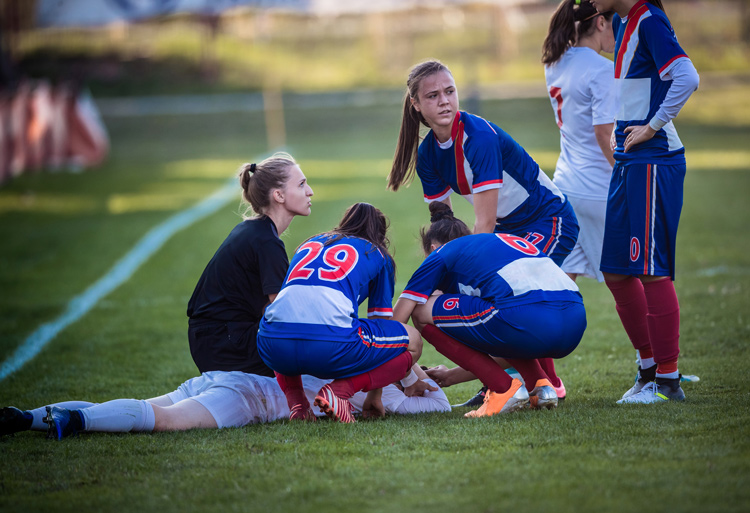
How to recognise concussion
Recognising concussion can be difficult. It is important to know when to suspect concussion, because appropriate response and management can help prevent further injury or even death. There are several possible symptoms and signs, but they can be subtle and they are not specific only to concussion.
Onlookers should suspect concussion when an injury results in a knock to the head or body that transmits a force to the head. A hard knock is not required—concussion can occur from relatively minor knocks.
Use the Concussion Recognition Tool 6 to help you recognise concussion.
What are the signs and symptoms of concussion?
The signs of concussion vary and may be difficult to detect. For example athletes may:
- appear normal apart from appearing vacant, dazed or stunned
- be disoriented and unable to recall team plays, scores, who the opponent is or be disoriented in terms of place and time
- ask repeatedly about what happened or what the score is; amnesia is common
- have difficulty concentrating and answering specific questions.
Loss of consciousness, seizure or balance difficulties are clear signs that an athlete has sustained a significant injury. Urgent medical support is critical in these circumstances. In some instances, it will be obvious that there has been a significant injury where the athlete loses consciousness, has a seizure or has significant balance difficulties.
Symptoms of concussion can be very subtle and may present as nothing more than the athlete reporting that they do not ‘feel right’. Concussed athletes often report these symptoms:
- visual disturbance
- feeling ‘foggy’, lethargic or slow
- having sensitivity to light or noise
- feeling dizzy or nauseous
- headache.
Coaches and support staff need to be alert for evidence that an athlete is behaving unusually or out of character, exhibits signs of disorientation, clumsiness or loss of balance.
Critical symptoms/signs | Obvious symptoms/signs | Subtle symptoms/signs |
|---|---|---|
|
|
|
If an athlete displays these symptoms/signs they may have a more serious injury. They should be immediately taken to the nearest emergency department. | ||
What to do for suspected concussion
First-aid principles apply. Neck injuries should be suspected if there is any loss of consciousness, neck pain or a mechanism that could lead to spinal injury. Athletes in this type of situation shouldn’t be moved without guidance from appropriately trained individuals.
To assist the treating health practitioner, it is helpful to note the following details at the time of the injury:
When: what time did the injury take place?
How: how did the injury occur? For example, is the injury from a knock to the head by a cricket bat or by an opponent’s shoulder?
Where: where on the body was hit? For example, the temple, shoulder or back of head.
What: what occurred next? Including symptoms such as loss of consciousness, convulsions, amnesia, vomiting or confusion.
Additional useful information: any further symptoms such as behavioural changes or loss of memory.
If in doubt, sit them out!
If there is any doubt about whether an athlete is concussed, that athlete should not be allowed to return to sport until cleared by a medical practitioner.
Diagnosis of concussion
The diagnosis of concussion should be made by a medical practitioner. They will take a clinical history and conduct an examination taking into account how the athlete was injured, symptoms and signs, cognitive functioning and neurological assessment including balance testing.

How to manage concussion
Any athlete with suspected or confirmed concussion should:
- remain in the company of a responsible adult
- not be allowed to drive
- be advised to avoid alcohol
- check their medications with their doctor.
Specifically, concussed athletes should avoid:
- aspirin
- anti-inflammatories (such as ibuprofen, diclofenac or naproxen),
- sleeping tablets
- sedating pain medications.
If diagnosed with concussion, athletes require immediate physical and mental rest; this allows the brain to recover.
To properly rest, time off school or work may be needed. Mental rest may include refraining from playing computer games, reading and watching television.
Children and adolescents
Children and adolescents aged 18 years or younger take longer to recover so a more conservative approach to concussion management should be taken. Concussive symptoms usually resolve in less than four weeks.
The child should be completely free of symptoms for at least 14-days before returning to contact or collision activities.
Return to learn
‘Return to learn’ is about the athlete’s gradual return to their usual program at school or work.
Having rested for 24 - 48 hours after sustaining a concussion, school-age athletes can return to school or study - as long as these activities don’t worsen symptoms. Thinking or concentrating for long periods can bring on or worsen symptoms of concussion. Gradually increasing the load on the brain without provoking symptoms is recommended. School programs may need to be modified to include more regular breaks, rests and increased time to complete tasks. Exams during that period may need to be postponed.
Return to school and learning should take priority before returning to sport. A concussed child should not return to sport until they have successfully returned to normal school activities.
Return to sport
‘Return to sport’ is about the athlete’s gradual return to full sporting activity.
Having rested for 24 – 48 hours after sustaining a concussion, the athlete can begin light physical activity - as long as the activity doesn’t worsen symptoms. Once symptoms have cleared, the athlete can begin a staged return to sport.
These Graded Return to Sport Frameworks can be used to inform Return to Sport programs.
Mental health and concussion
There is a potential link between mental illness and concussion. Athletes with a history of mental illness should discuss this with a doctor. Where there is a history of mental illness, a more cautious assessment and a more conservative management approach should be taken.
There are a number of organisations with information on mental illness and where to go for help:
- Lifeline provides a 24 hour, 365 days per year crisis support and suicide prevention service. It is free and provides immediate support for those in need.
- Headspace is a national youth mental health support service providing mental health assistance to those aged 12–25.
- Beyond Blue supports Australians to protect their mental health through education and awareness.
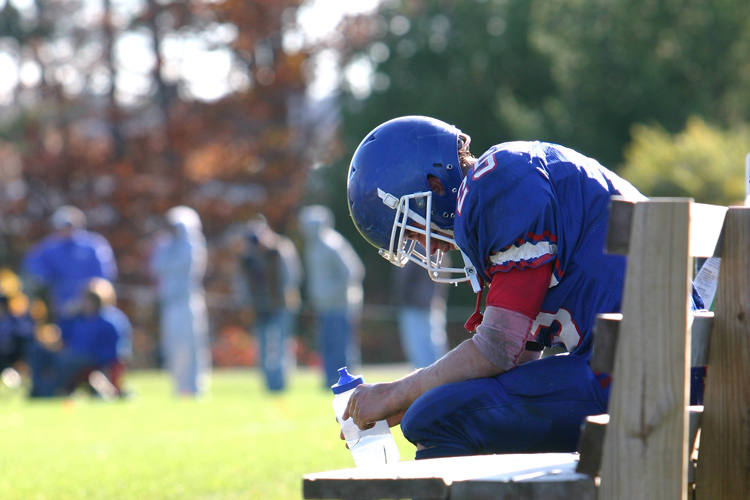
Long-term consequences of concussion
There has been recent concern about potential long-term consequences of concussion. Chronic traumatic encephalopathy neuropathological change (CTE-NC) is a type of degenerative neurological disease that is associated with a history of repeated head trauma. There has been a growing number of former athletes diagnosed with CTE-NC post-mortem. There are many unknowns about why some athletes are susceptible.
The best way to safeguard the immediate and long term health of athletes is to:
- Remove athletes suspected of having concussion
- Treat each case of concussion carefully
- Adopt a conservative approach to return to sport.
Protective headgear and concussion
Helmets will not stop concussion from occurring.
Current evidence suggests that helmets, mouth guards or other protective wear offer little if any benefit in the prevention of concussion. Research into protective wear is continuing. Protective wear is important, however, for the prevention of other traumatic head injuries such as lacerations, skull fractures and dental injuries.
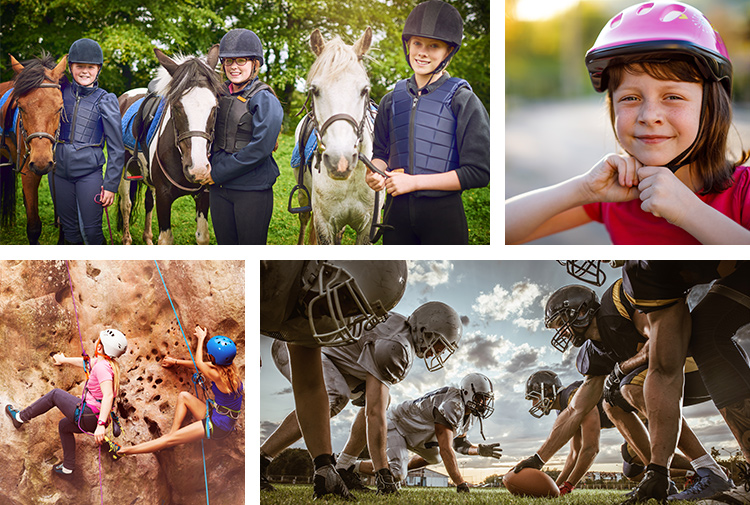
Sporting code policies
Sporting organisations need to continually review their policies for best practice concussion diagnosis and management.
High-risk sports, such as professional collision sports, need to ensure that medical personnel are appropriately trained in the detection and management of concussion.
Proposed rule changes require careful consideration of the potential benefits versus possible unintended negative consequences.
Sport organisations in Australia continue to monitor the evolving evidence around repetitive head trauma and concussion. Sport organisations continue to introduce changes to rules and regulations to optimise the detection and management of concussion, aligned with the latest evidence.
The increasing awareness of sport-related concussion and the associated community concern mean many sporting organisations have developed their own guidelines for the management of the condition. These guidelines are constantly evolving through ongoing review. There is a strong alignment across the various sporting codes, supported by the latest scientific evidence on concussion diagnosis and management.
The following sports have concussion policies available on their websites:
Under-reporting of concussion is still a problem
Coaches and support staff need to have a good understanding of concussion in order to appreciate the importance of identifying symptoms and supporting athletes as they recover from concussion and as they return to sport. Coaches and support staff must be able to recognise the symptoms and signs of concussion in order to detect concussion when no medical supervision is present.
